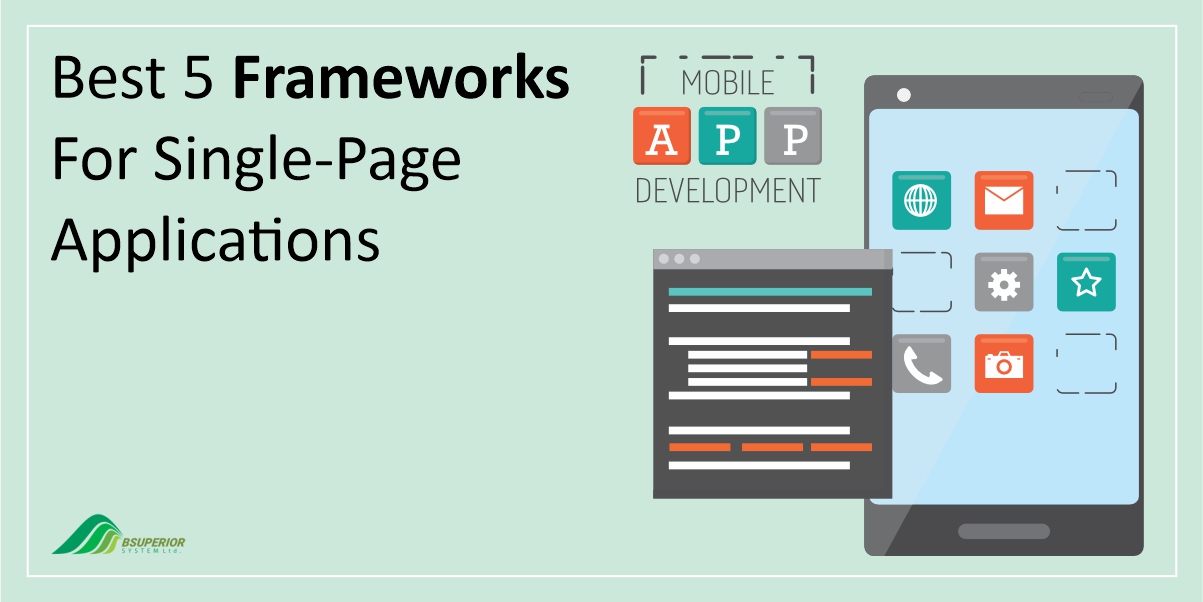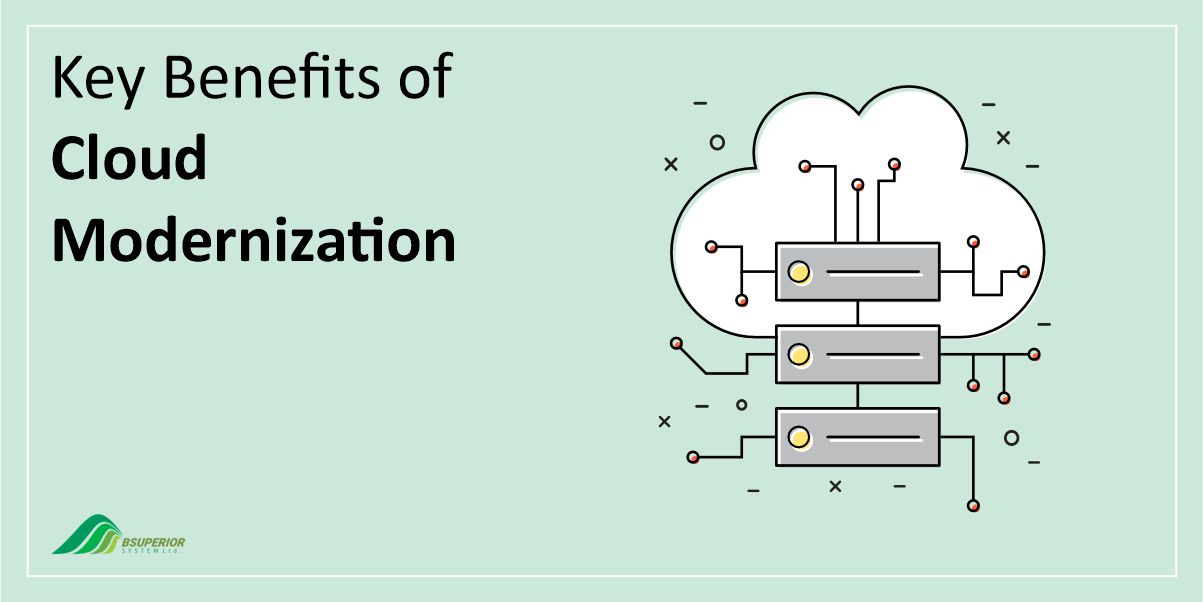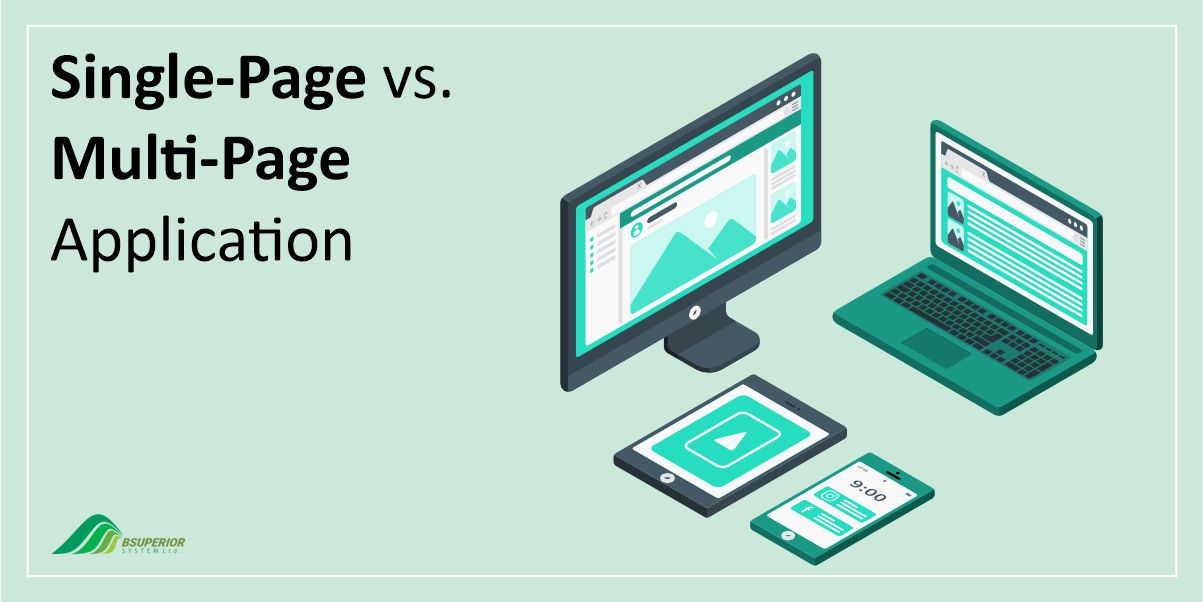Top Backend Languages for Web Development [2023 Guide]
![Top Backend Languages for Web Development Top Backend Languages for Web Development [2023 Guide]](https://bsuperiorsystem.com/wp-content/uploads/2023/09/Top-Backend-Languages-for-Web-Development.jpg)
Backend frameworks for web development have become significantly more popular in today’s era of digital dependence. As web applications become more complex, top backend technologies play a crucial role in constructing the server-side logic, databases, and infrastructure.
In this blog post, we will explore the most popular backend technologies as well as ten of the best backend languages. We will also provide an overview of each language, its advantages, and limitations.
What is Backend?
Backend refers to the technical aspect of web development that focuses on the server-side operations and functionality of a website or application.
It involves the programming code and logic that runs behind the scenes, handling tasks such as interacting with databases, performing CRUD (Create, Read, Update, Delete) operations, and implementing server-side operations.
In simpler terms, the backend of a website or application is like the engine or the kitchen of a restaurant. It involves all the processes and functions that occur behind the scenes to ensure the proper functioning of the website or application, even though it may not be visible to users.
The backend consists of three main components:
- Database: A database is a structured and efficient storage system for storing large amounts of data.
- Server: A server acts as the computer that receives user requests and generates responses based on the application’s logic and data.
- Application: An application is a program running on the server that listens for requests, interacts with the database, and sends responses back to the users.
Backend developers are responsible for building and maintaining these components. They write code to create and manage databases. They also utilize backend frameworks to develop the server-side software. Additionally, they validate and process data before storing it in databases, and integrate user-facing elements with the server-side elements.
Back-end vs. Front-end
Frontend and backend are fundamental terms in software development that are crucial for the effective and responsive functioning of software solutions. While backend technologies are responsible for the server-side operations, frontend tools are associated with the client-side of the application.
| Frontend | Backend | |
| Overview | Handles the
client-side of the application |
Deals with the
server-side of the application |
| Main Focus | Focuses on
user-facing aspects |
Focuses on
behind-the-scenes operations and logic |
| Main Task | Involves designing visual elements | Involves creating and
maintaining the code that runs the website or app |
| Tools | HTML, CSS,
JavaScript Frameworks like Bootstrap, Angular JS, libraries like jQuery |
Java, Python,
Ruby, PHP Databases like MySQL, PostgreSQL, MongoDB |
Types of Backend Programming Languages
There are two main types of backend programming languages:
- Object-Oriented Programming (OOP): This approach focuses on using objects or data structures instead of logic. OOP is often preferred for large and complex projects that involve teamwork.
Common examples of OOP backend programming languages include PHP, Java, Ruby, and Python. However, OOP scripting can be complex and time-consuming.
- Functional Programming (FP): This type of backend programming emphasizes declarations and results rather than the programming process itself. FP supports parallel and immutable data and avoids side effects.
It offers improved productivity, modularity, and simplified scripting solutions. Popular FP backend programming languages include SQL, R, Haskell, and F#.
We can also categorize backend languages into the following groups:
- Scripting languages: These languages are specifically designed for developing small programs or scripts. Examples are PHP, Perl, and Python.
- Markup languages: These languages are intended for creating documents with a predefined structure or layout. XML and HTML are well-known examples of such languages.
- Programming languages: These languages are developed for building extensive programs or applications. Examples include Java, C++, and C#.
- Query languages: These languages, including SQL and NoSQL are designed to retrieve data from databases.
What are the Most Popular Backend Programming Technologies?
Backend technologies play a crucial role in the development of web applications. Below you can find the most popular backend programming technologies for 2023.
- Laravel
- Django
- Spring
- Flask
- ExpressJS
- NestJS
- Ruby on Rails
- Strapi
- Meteor
- Koa
- Beego
- Symphony
- Iris
- .Net Core
- CodeIgniter
How to Choose the Best Backend Programming Languages for Your Project
Choosing the best backend programming language and framework can be challenging. There are several factors to consider in this regard. To make an informed decision based on your project requirements, preferences, and goals, have the following key aspects in mind.
- Performance metrics: Define and prioritize the performance metrics that matter most for your project, such as response time, throughput, scalability, reliability, and resource consumption.
- Language features: Compare the features and characteristics of different languages, including syntax, data types, memory management, concurrency, libraries, and compatibility. Also, consider how these features might affect performance.
- Framework options: Evaluate available framework options for each language and their impact on performance. Consider factors such as documentation, support, popularity, features, flexibility, and compatibility.
10 Best Backend Languages in 2023
As technology continues to advance at a rapid pace, it is highly beneficial for backend developers to familiarize themselves with the most popular and widely used backend languages.
Read More: BEST FRONT-END DEVELOPMENT COMPANIES IN THE WORLD
In what follows, we will have a look at the best backend languages that are expected to dominate the market in 2023.
JavaScript
JavaScript is a reliable backend programming language utilized by developers for both server-side and front-end tasks. It is widely recognized as one of the most popular programming languages. JavaScript offers numerous benefits, including rich interfaces, extensive online resources, and interoperability.
Pros:
- Widely adopted: JavaScript’s popularity ensures a large pool of developers to choose from.
- Flexibility: JavaScript is a versatile language suitable for both frontend and backend development.
- Fast development time: As a high-level language, JavaScript is easy to read and write, and thus facilitates quicker and easier development than lower-level languages.
Cons:
- Security concerns: JavaScript’s dynamic nature can make it challenging to secure, especially in larger applications.
- Not universally suitable: JavaScript may not be the optimal choice for every situation, such as when dealing with extensive data processing. In such cases, other languages like Java or Python can be more effective.
Python
Python is a highly interpreted programming language that is widely used in various programming domains, including data analytics, machine learning, and web applications. Python is currently ranked first in TOIBE Index which makes it the most popular programming langauge in 2023.
Python supports multiple programming paradigms, such as object-oriented programming, structured programming, and functional programming.
Pros:
- Python is a highly popular backend language in the programming community.
- It is considered beginner-friendly and relatively easy to learn.
- Python benefits from a comprehensive standard library.
- Python is an open-source language, allowing for collaborative development and accessibility.
Cons:
- Compared to certain other languages, Python may not offer the same level of speed or performance.
- Python is not the preferred choice for mobile app development due to certain limitations.
- Python has multiple versions, and code developed in one version may lead to errors when executed in other versions, particularly when using libraries.
Java
Java is a powerful backend technology that was published in 1995. Over the years, developers have preferred Java for creating feature-rich and adaptable web applications. Additionally, Java can be utilized for mobile devices, server software development, and microcontrollers.
Pros:
- Popularity: Java is widely recognized as one of the most popular programming languages globally.
- Robustness: Java’s robustness makes it suitable for developing large-scale enterprise applications.
- Versatility: Java is a versatile language capable of building various applications, including web, mobile, and desktop applications.
- Vast Ecosystem: Java benefits from a vast ecosystem with numerous libraries and frameworks available.
Cons:
- Java is considered verbose and tedious to write, particularly when compared to newer languages like Python or Ruby.
- Java may have slower startup times.
- Java can be challenging to learn, particularly for beginners, due to its complexity and extensive features.
PHP
PHP is a well-known server-side programming language that was officially introduced in 1997. This backend language is integrated with HTML and is commonly used for session tracking, designing eCommerce websites, and managing databases and dynamic content.
PHP remains a popular choice for many web applications as their server-side language. According to W3Techs, 77.5% of websites are using PHP as a backend language in 2023.
Pros:
- Open-source and Free: PHP is an open-source language, available at no cost for users.
- Platform Independence: PHP can run on various platforms, making it highly versatile.
- Faster Loading Rate: PHP is known for its faster loading rate. This feature greatly enhances the performance of web applications.
Cons:
- Suitability for Larger Web-based Applications: PHP may not be the ideal choice for all larger web-based applications given its limitations in handling complex and extensive projects.
- Lack of Debugging Tools: PHP lacks robust built-in debugging tools, which can make the process of identifying and fixing errors more challenging.
- Security Concerns: Compared to some other languages, PHP is considered to be relatively less secure.
Ruby
Ruby is a widely used and popular open-source backend language that was introduced in 1995. One of the main advantages of using Ruby is its time efficiency.
Read More: WHICH FRONT-END FRAMEWORK IS BEST FOR LARAVEL?
Ruby provides a range of coding tools that accelerate the backend development process. Additionally, the availability of numerous libraries and active community support are other benefits of using Ruby for server-side programming.
Pros:
- Ruby is one of the most popular web development frameworks.
- Ruby is known for its easy-to-read and write syntax, making it an excellent choice for beginners.
- Ruby follows a batteries-included philosophy, meaning that many of the built-in features and libraries are available out of the box.
Cons:
- Ruby applications can be slower to load, particularly on larger projects.
- Given its flexible and dynamic nature, Ruby is more challenging to debug.
Go
Go, also known as Golang, is a relatively new programming language. It is a compiled language which results in fast and efficient code execution.
Go also includes native support for concurrent programming, making it a favorable option for building backend systems that require handling high traffic volumes.
Pro:
- Speed: Go’s compiled code performs at a great speed.
- Efficient Garbage Collection: Go incorporates an efficient garbage collector that optimizes resource management by automatically reclaiming the unused memory.
- Type System: Go programs are statically typed, minimizing runtime errors and providing increased reliability.
Cons:
- Lack of Generics: The absence of generics in Go can make code harder to understand and maintain, as it may require repetitive implementations for different types.
- Limited Libraries and Frameworks: Go currently has a relatively small collection of available libraries and frameworks.
- Ongoing Development: Being a relatively young language, Go is still evolving, and certain areas of programming paradigms may not be fully covered yet.
- Lack of Manual Memory Management: Go does not provide manual memory management, which means that users cannot directly control and access memory.
Rust
Rust is a modern systems programming language introduced in 2010. It is considered a safe and efficient alternative to C and C++. It is highly popular among developers because of its performance and memory safety. Rust is well-suited for backend development, particularly for creating high-performance systems.
Pros:
- Rust is very fast and memory-efficient.
- The rich type system and ownership model in Rust ensure memory and thread safety, and more importantly, reduce memory management bugs.
- Rust is an open-source project supported by a large community.
Cons:
- Rust is a relatively young language and may lack the stability and maturity of its competitors.
- Rust has a steep learning curve as it differs significantly from other languages.
- Rust does not include garbage collection.
C#
C# is a versatile programming language developed by Microsoft. It is widely used in game development because of its robust graphics capabilities.
The appeal of C# as a backend language lies in its user-friendliness and readability. It is very similar to C++, so those already familiar with that language will have no difficulty adopting C#.
Pros:
- C# is a powerful language that is relatively easy to learn.
- The availability of excellent tooling and support within the Visual Studio IDE enhances the development experience.
- C# runs on Microsoft’s .NET framework, which is widely adopted by enterprises.
Cons:
- Cross-platform compatibility is limited since C# is primarily oriented toward Windows platforms.
- The adoption of C# may result in a narrower range of libraries and frameworks available.
C++
C++ is an extended version of the C language that introduced the concept of classes, which was absent in C. The inclusion of classes and object-oriented programming is crucial in modern programming languages for writing organized code and defining relationships between objects.
C++ is one of the oldest programming languages primarily used in system programming and embedded systems. As a low-level language, it allows direct interaction with hardware resources, making it suitable for gaming, operating systems, and database software applications.
Pros:
- Portability: C++ applications can be executed on different platforms and operating systems.
- Object-Oriented Programming: C++ supports object-oriented programming which not only enhances its power but also enables structured coding.
- Memory Management: C++ provides programmers with complete control over memory management.
- Low-Level Language: C++ is closely connected to the system and considered a low-level language. This characteristic makes it popular for building embedded systems as it can directly interact with hardware resources.
Cons:
- Security Issues
- Lack of Garbage Collection
Kotlin
Kotlin is a programming language that is mainly used for the backend development of Android applications. Introduced in 2011, it has become one of the most popular programming languages in the field of computer science
Kotlin has been gaining popularity and is gradually replacing Java in this domain. The demand for Kotlin is increasing, with over 60% of Android app developers using it for backend programming.
Pros:
- Concise Code: Kotlin allows programmers to solve significant problems with fewer lines of code compared to other languages.
- Easy to Maintain: The concise nature of Kotlin code allows programmers to easily understand and maintain it.
- Interoperable with Java: Kotlin is fully compatible with Java, allowing programmers to integrate it into existing Java projects without the need for extensive changes.
Cons:
- Absence of Primitive Types: Kotlin lacks primitive types for variables and functions, which programmers are accustomed to in languages like Java.
- Slower Compilation: When it comes to clean builds of Android applications, Java generally outperforms Kotlin in terms of compilation speed.
Summary
In this blog post, we tried to help you get to know some of the top backend programming languages. While this guide offers recommendations for the best options, it is important to consider your project’s specific requirements before selecting the best language.
FAQs
PHP developers have made significant improvements to this language. As a result, it has a faster performance compared to Python and several other languages.
Python and PHP are two powerful languages that can serve different purposes in web development. For beginners, Python is often recommended due to its faster learning curve. However, for projects that demand particularly fast websites or the processing of large amounts of data, PHP may be a better choice.
C++ is a general purpose language, and thus it can be used for backend development.
While Node.js is a preferred choice for web application and website development, Python is well-suited for back-end applications, numerical computations, and machine learning.
There is no definitive answer to which one is better. Both .NET and Node.js provide an impressive array of features and libraries that are widely utilized by developers. The Node.js community is highly active and responsive, ensuring that you can find answers to most questions promptly. On the other hand, the .NET community also offers a vast selection of libraries that provide valuable assistance and help developers get started quickly.
Django is a collection of Python libraries that enable you to create a quality Web application and is suitable for both frontend and backend development.
We value your input and believe this content may enhance our services. However, it's under review. If you see room for improvement, please use the "Report an issue" button below. Your feedback helps us excel.
Contact us today at –– and speak with our specialist.




